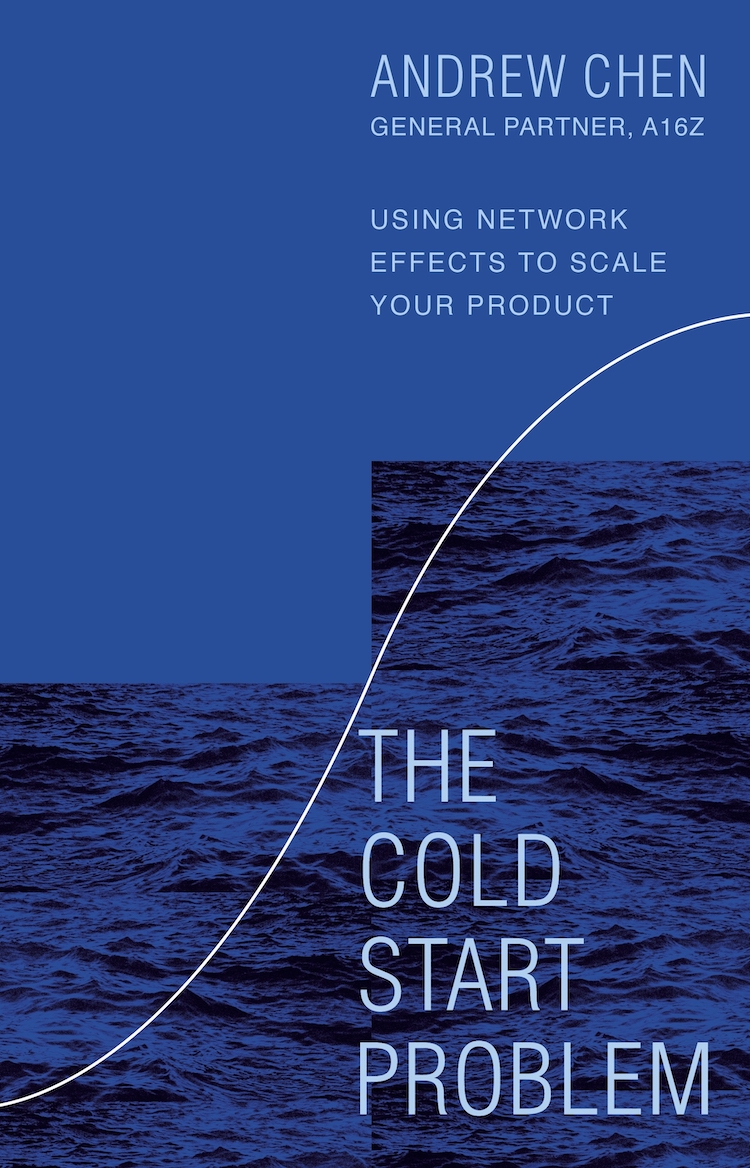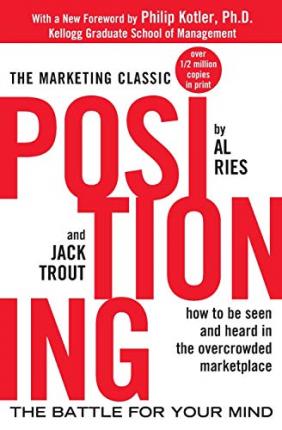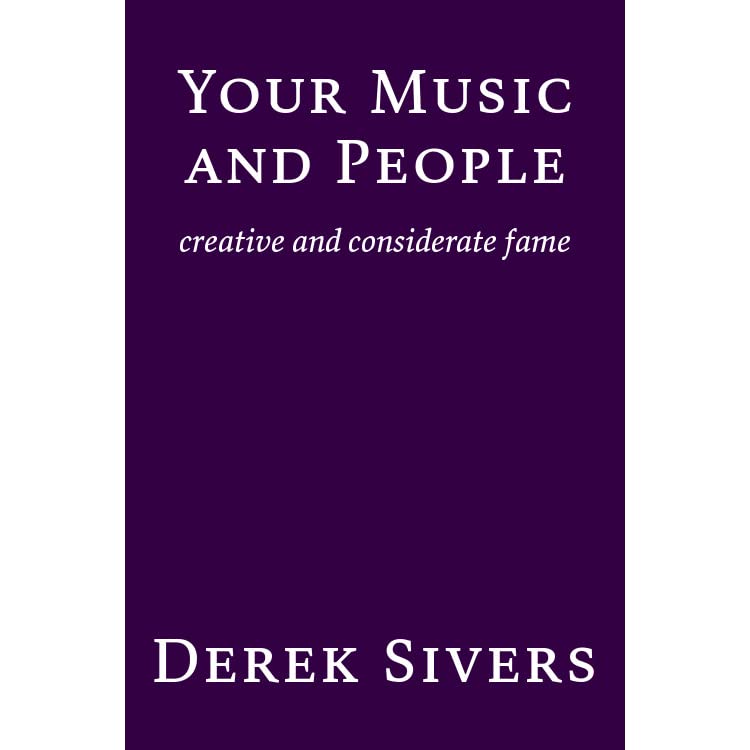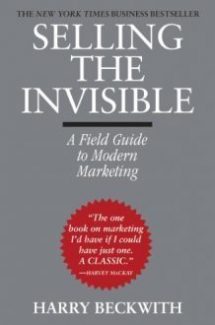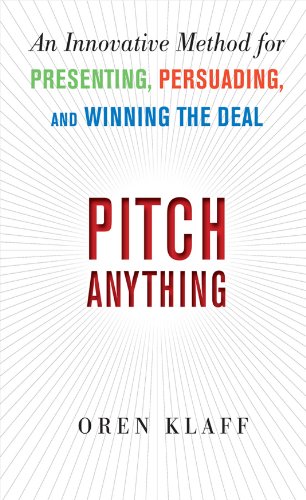This Is Marketing
by Seth Godin
- Marketing
- Ashto =
- Jonesy =
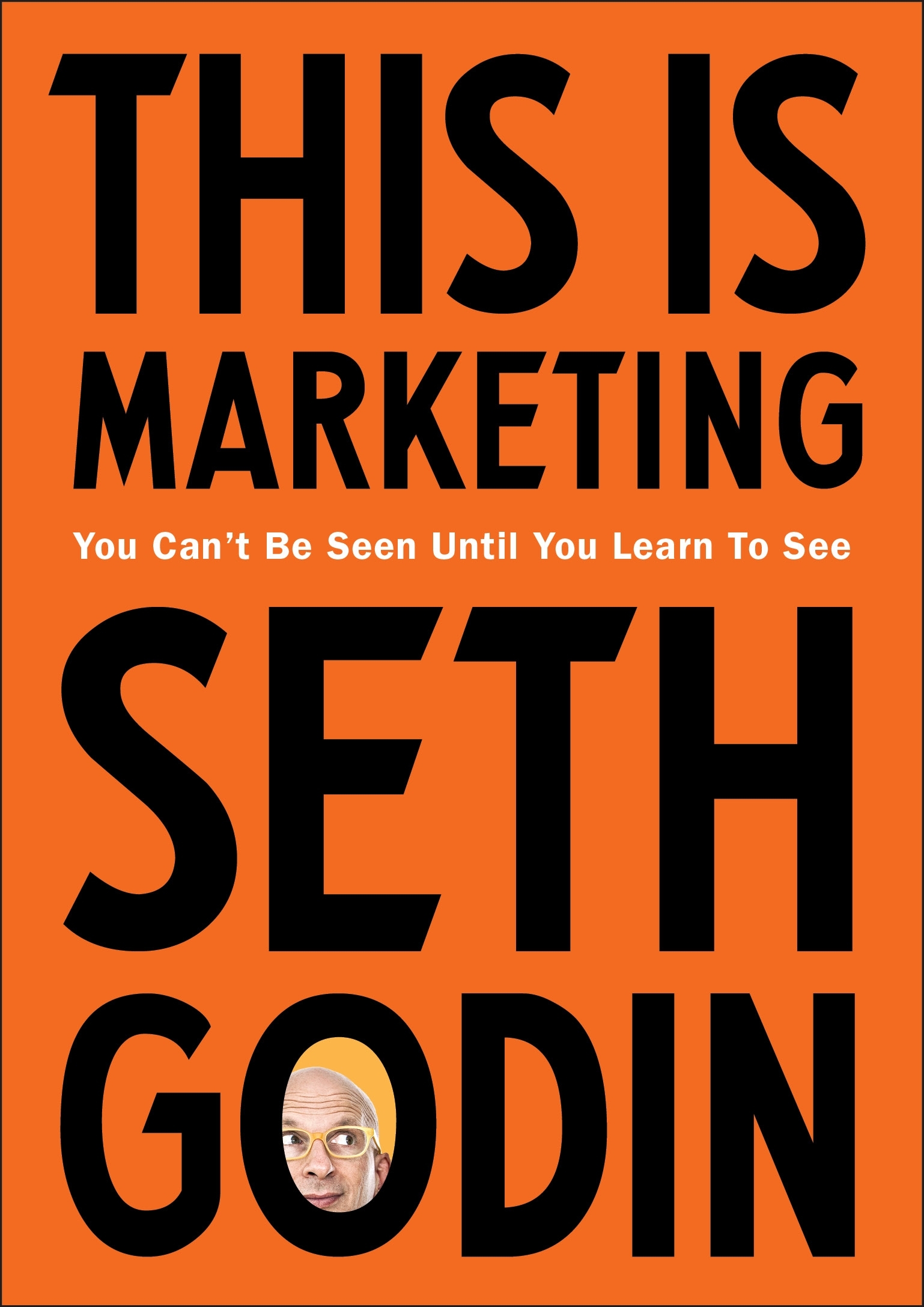
This Is Marketing – by Seth Godin
Seth Godin is a marketing guru, This Is Marketing represents the culmination of decades upon decades of marketing lessons and advice. You won’t find any scripts or templates, and you won’t find anything scammy or short-term. This book is all about empathy, understanding and being a human (not typical advice you hear in most marketing books, but vital words of wisdom to consider before starting your next project).
‘You can’t be seen until you learn to see’
Grab a copy of the book here: https://www.bookdepository.com/This-is-Marketing-Seth-Godin/9780241370148/?a_aid=adamsbooks
This Is Marketing (dot point) Summary
- Chapter 1 – Not mass, not spam, not shameful
- “in this book we’re working together to solve a set of related problems”
- how to spread your ideas
- how to make the impact you seek
- how to improve the culture
- In the world the culture has changed
- Instead of selfish mass, effective marketing now relies on empathy and service
- Marketing is not a battle, it’s not a war, or even a contest
- marketing is the generous act of helping someone solve a problem – THEIR problem
- it’s a chance to change the culture for the better
- marketing involves very little in the way of shouting, hustling or coercion
- It’s a chance to serve, instead
- The lock and the key
- It doesn’t make sense to make a key and then run around looking for a lock to open
- The only productive solution is to find a lock and then fashion a key
- SO: It’s easier to make products and services for the customers you seek to serve than it is to find customers for your products and services
- Marketing doesn’t have to be selfish
- in fact, the best marketing never is
- marketing is a generous act of helping others become who they seek to become
- it involves crafting stories – honest stories that resonate and spread
- Marketers offer solutions, opportunities for humans to solve their problems and move forward
- the other type of marketing – the hype, scams and pressure – thrives on selfishness
- i know that in the long run it doesn’t work
- and you can do better… we all can
- It’s time
- time to get off the social media merry-go-round that goes faster and faster but never gets you anywhere
- time to stop hustling and interrupting
- time to stop spamming and pretending that you’re welcome
- time to stop making average stuff for average people while hoping you can charge more than a commodity price
- time to stop begging people to become your clients, and time to stop feeling bad about charging for your work
- time to stop looking for shortcuts, and time to start insisting on a long, viable path instead
- Chapter 2 – The marketer learns to see
- Marketing in five steps
- THE FIRST STEP is tp invest a thing worth making, with a story worth telling, and a contribution worth talking about
- THE SECOND STEP is to design and build it in a way that a few people will particularly benefit from and care about
- THE THIRD STEP is to tell a story that matches the built-in narrative and drams of that tiny group of people, the smallest viable market
- THE FOURTH STEP is the one everyone gets excited about: spread the word
- THE LAST STEP is often overlooked: show up – regularly, consistently, and generously, for years and years – to organise and lead and build confidence in the change you seek to make. To earn permission to follow up and to earn enrolment to teach.
- Exec summary
- Ideas that spread win
- Marketers make change happen for the smallest viable market
- And by delivering anticipated, personal and relevent messages that people actually want to get
- Marketers don’t use consumers to solve their problem, they use marketing to solve consumers problems
- Things marketers know
- committed, creative people can change the world (in fact, they’re the only ones that do)
- you can do it right now, and you can make more change than you can possibly imagine
- You cannot change everyone, therefore asking ‘who is it for?’ cna focus your actions and help you deal with the nonbelievers
- (in your head and in the outside world)
- Change is best made with intent
- “what is it for?” is the posture of work that matters
- Human beings tell themselves stories
- Those stories, as far as each of us is concerned, are completely and totally true, and it’s foolish to try to persuade them (or us) otherwise
- We can group people into stereotyped groups that often tell themsleves similar stories
- groups that make similar decisions based on their perceived status and other needs
- What you say isn’t nearly as important as what others say about you.
- Chapter 3 – Marketing changes people through stories, connections, and experience
- Each person has a story in his or her head, a narrative used to navigate the world
- The extraordinary thing is that every person’s narrative is different
- That riff about the quarter-inch drill bit
- Harvard marketing professor Theodore Levitt famously said “people don;t want to buy a quarter-inch drill bit, they want a quarter-inch hole”
- the lesson is that the drill bit is merely a feature, a means to an end, but what people truly want is the benefit, the hole it makes
- But that doesn;t nearly go far enough
- No one wants a hole.
- what people want is the shelf that goes on the wall after they drill the hole
- actually, what thjey want is how they’ll feel once they see how uncluttered everything is, when they put their stuff on the shelf
- BUT… they also want the satisfaction of knowing they did it themselves
- OR – perhaps the increase in status they’ll get when their spouse admires their work
- OR – the peace of mind that comes from knowing that the bed room isn;t a mess, and that it feels safe and clean
- OR – they’ll stack books on the shelf to show off how smart they are when they invite friends over
- “People don’t want to buy a quarter-inch drill bit. They want to feel safe and respected”
- Why do people who never drive off road buy a 90,000$ Toyota Land Cruiser?
- People don’t want what you make
- They want what it will do for them
- they want how it will make them feel
- there actually aren;t that many feelings to choose from
- most marketers deliver the same feelings, we just do it in different ways, with different services, products, and stories, and we do it for different people in different moments
- If you can bring someone belonging, connection, peace of mind, status, or one of the other most desired emotions, you’ve already done something worthwhile
- The thing you sell is simply a road to achieve those emotions, and we let everyone down when we focus on the tactics, not the outcomes
- “Who’s it for?” and “What’s it for?” are the two questions tat guide all of our decisions
- Chapter 4 – The Smallest Viable Market
- “What change are you trying to make?”
- it’s a simple question, but a loaded one, because it implies that you’re responsible
- you are an actor with intent, an agent of change, a human being working hard to change other human beings
- denying this is a form of hiding – it’s more productive to own it instead
- Stumble 1: it’s tempting to pick a grandiose, nearly impossible change
- “I want to change the face of education worldwide” OR “I want to revolutinoise the oil industry” – these are great, but it’s never been done before with a person of our level of resources
- game-changing home runs are great, and it’s inspiring to see people try to beat the odds and change everything… BUT…
- That’s a heavy burden, as well as a convenient excuse in times of despair
- it’s no wonder that you’re stuck – you’re seeking to do the impossible
- perhaps it makes more sense to begin with a hurdle you can leap
- perhaps it makes sense to be very specific about the change you seek to make, then go and make it happen
- then, based on that success, you can replicate the process on ever bigger challenges
- Stumble 2: you want to defend what you’re already doing, which is selling what you’ve already been charged with selling
- so we trick ourselves by reverse-engineering the ‘change’ we want to make and force it to fit in with what we’re currently doing (rather than being with the change first, then work out the WHAT second)
- “Who are you seeking to change?”
- it’s quite clear that you can’t change EVERYONE
- so you need to change SOMEONE (a group of someones)
- to find that group, they need to share someone – perhaps their demographics (their geography, age, income, etc), but a better way is by Psychographics (they way they think and feel, the stories they tell themselves)
- eg: Dunkin Donuts and Starbucks both sell coffee, but for the first 20 years of their battle they didn’t market to the same groups. Dunkin Donuts osld to taxi drivers and construction workers, Starbucks served people with very specific beliefs about money, community, opportunity, luxury and time
- Worldviews
- Begin by choosing people based on what they dream of, believe, and want, not based on what they look like
- A ‘worldview’ as a shortcut, a lens each of us use when we see the world – it’s our assumptions, biases, stereotypes
- when you’re picking a group based on psychographics, you need to map their worldviews. When you do, you can become clearer about what they might want and you’ll be better placed to make something for them that they might buy
- Forcing a focus
- Relentless pursuit of mass will make you boring, because mass means average, it means the centre of the curve, it requires you to try to offend no one and satisfy everyone
- it leads to compromises and generalisations
- INSTEAD – begin with the Smallest Viable Market – wbatis the minimum number of people you would need to influence to make it worth the effort?
- The smallest viable market is the focus that, ironaically and delightfully, leads to your growth
- ‘Specific’ is a kind of bravery
- specific means accountable – it worked or it didn;t, it spread or it didn;t, it matched or it didnt
- are you hiding beyong ‘everyone’ or ‘anyone’? you’ll never be able to serve everyone, which is comforting since you’re less likely to be disappointed when it doesn’t happen
- Everything gets easier when you walk away from the hubris of ‘everyone’ – your work is not for everyone, it’s only for those who signed up for the journey
- “it’s not for you”
- we’re not supposed to say that, but we must
- ‘it’s not for you’ shows the ability to respect someone enough that you’re not going to waste their time, pander to them, or insist that they change their beliefs
- It also shows respect for those that you DO seek to serve, when you say to them ‘I made this for you – not for other folks, but for YOU’
- Because it doesn;t matter what people you’re not seeking to serve think. what matters is whether you’ve change the people who trust you, the people who have connected with you, the poeple you seek to serve
- Everyone best-selling book on Amazon has at least a few 1-star reviews. It’s impossible to create work that matters AND please everyone
- The simple marketing promise
- My product is for people who believe __________
- I will focus on people who want ____________
- I promise that engaging with what I make will help you get ______
DO FOR WYWL EXAMPLE
- CHAPTER 5. In Search of “Better”
- Empathy is at the heart of marketing
- People don’t believe what you believe
- They don’t know what you want
- Everyone has noise in their heads
- Everyone thinks they are right
- Everyone has an impulse to make things better
- Everyone is lonely, insecure and a bit of a fraud.. And everyone cares about something
- Better isn’t up to you
- Out of the hundreds of models of insurance, motorcycles or ketchup, how do we remember this or choose a product>
- We remember the best one – the best for us
- If we care about sustainability and price, then our brain has a slot for our favorite brand, and that’s the one that’s best at sustainability and price – no surprise
- But our neighbour who cares about status within a group and luxury has a very different brand in mind
- Positioning as a service
- Begin with an audience worth serving
- Pick two axis (lets do a real one on this)
- Speed, price, performance, ingredients, purity, obviousness, safety, edgeness
- Some potato chips are healthy and organic, others are traditional and satisfying
- Could do What You Will Learn as a category e.g
- Choose your axis, choose your future
- When you look at attributes its tempting to pick the ones most people care about the most
- The popular one – you will choose a crowded quadrant
- Everything that we purchase – every investment, every trinket, every experience – is a bargain
- we pay less for it than the value it is worth to us (otherwise we wouldn’t buy it at all)
- it’s worth more than we paid for it
- If a prospect understands what is on offer and chooses not to purchase it, then it’s not for them (at least, not today, not at this price, not with this structure). That’s OK too
- What’s a car for?
- a teenager’s first car (for the teenager) = independence and freedom, and shift in status and power and perception
- a teenager’s first car (for the parent) = a symbollic gesture to offer freedom and responsibility, and an opporunity to talk about control, safety, decisions and status
- 6. Beyond commodities (aka empathy level 2 …)
- Problem first
- Our calling is to make a difference, to make things better for those we seek to serve
- the opportuntiy to choose a path and follow it is not about our own benefit, but because of what it can produce for others
- to go beyond the commodity and make true change, beyond the quarter-inch drill bit or the quarter-inch hole, the change we’re making is on the emotional level
- The commodity suckout
- if you make somethign that others make, if it’s comething we can find on upwork, amazon, alibaba or fiverr, you’ve got a pain
- the pain is that if you try to raise your price in order to make a decent return on the effort you’re putting in, customers will just go elsewhere and find someone cheaper
- now, people know more than you do about your prices and about your competitors. if you’re doing work that is a commodity, it won’t ever be enough
- Authenticity VS Emotional Labour
- Emotional Labour is the work of doing what we don’t feel like doing
- it’s about showing up with a smile when we’re wincing inside, or resisting the urge to chew someone out because you know that engaging will make a far bigger difference
- It takes only a small amount of energy and guts to be Authentic – to act the way you feel, to ‘be yourself’
- you need to feel confident enough to let your true feelings be exposed, knowing that rejection means it’s personal
- BUT there’s also a lot of room to hide – “if all you do is follow your muse and ‘be yourself’, you may find that your muse is a chicken that is steering you away from important work
- “If your authentic you is a selfish jerk, please leave him at home”
- “If you need to be authentic to do your best work, you’re not a professional, you’re a fortunate amateur”
- For the rest of us, there’s the opportunity to be a professional, to exert emotional labour in search of empathy – the empathy to imagine what someone else would want, what they might believe, what story would resonate with them
- we don’t do this work because we feel like it in the moment – we do this work, this draining emotional labour, because we’re professionals, and because we want to make change happen
- Emotional Labour is the work we do to provide service
- Chapter 7 The canvas of dreams and desires
- What do people want?
- If you ask them, you probably won;t get the right answer, or you certainly won’t find anything groundbreaking
- it’s our job to watch people, figure out what they dream of, and then create a transaction that can deliver that feeling
- Three common confusions most of us get stuck on
- 1: we confuse WANTS and NEEDS. we need air, water, health, and a roof over our heads. pretty much everything else is a want, so we should treat it as such
- 2: people are intimately aware of their wants (which they think of as needs) BUT they are absolutely terrible at inventing new ways to address those wants. They often prefer a familiar solution to satisfy their wants, even if its not working very well
- 3: mistakenly believing that everyone wants the same thing. we don’t. some people want things that are brand new, some people want things to never change.some want chocolate, some want vanilla, some want butter pecan (throwback to The Dip episode)
- Don’t begin with you machines, your inventory, your factory, your tactics
- don’t begin with what you know how to do or some sort of distraction about your mission
- Instead, begin with the dreams and fears, with emotionak states, and with the change your scustoemrs seek to make
- SEE PAGE 80 FOR LIST OF DREAMS/EMOTIONS/FEARS
- Nobody needs your product
- You might sell white leather wallets, and you might think “everyone needs a white leather wallet”
- FIRSTLY – the don’t NEED a wallet. they might WANT a wallet, but thats different
- SECONDLY – people might decide that they want a white leather wallet, but it isn;t because they want a white leather wallet… they want how it will make them FEEL to pull a white leather wallet out of their pocket when it’s time to pay.
- Identify that FEELING first before you spend any time or money making a wallet
- What do YOU want
- Seth – “let me guess”
- “you’d like to be respected, successful, independent, appropriately busy, and maybe a little famous. you’d like to do work you’re proud of and do it for people you care about
- what’s NOT on the list? a certain colour car, a certain job title, the number of bedrooms in your house…
- the details don;t matter so much – we all want similar things, but the details of how we got about getting those things can differ drastically
- Always be testing
- you don;t know the answer
- so take the cheap and fun option – test it first, be wrong, and tweak until you get it close to right
- CH8 – More of the Who: Seeking the smallest viable market
- A tough exercise
- Why don’t people choose you?
- To go to the next level of empathy, you need to ask some hard questions
- the people who DON’T buy from you, who happily buy from a competitor even though they kn ow you exist… WHY ARE THEY RIGHT?
- Why are the people who don’t choose you correct in their decision to not choose you?
- Understand why people DO choose you, and undertsnad and respect why people DON’T choose you
- when we find the empathy to say “I’m sorry, this isn’t for you – here’s the phone number of my competitor” then we also find the freedom to do work that matters
- Ch9 – People like us do things like this
- A strong driver for why we do what we do (and why we buy what we buy) as the DESIRE TO FIT IN
- We do things in accordance with our own internal narratives, but we also do things in accordance with our ‘tribes’ (people like us – a desire to fit in – a desire to affiliate)
- The internal narrative
- We buy the $700 stroller because it’s smart (or we don;t because it’s stupid)
- we shop at the farmers market to get fresh healthy food (or we dont because it’s raining and they don’t sell cheetos)
- we wear chinos with boat shoes and no socks because that how successful people dress (or we don’t because that’s how wankers dress)
- all of the decisions we make are based on our internal narratives and the stories we tell ourselves, and these stories are driving by asking what types of groups we want to belong to, who we want the ‘people like us’ to be
- Ch11 – status, dominance, affiliation
- Status roles determine who gets to eat first in the lion pack
- The desire to change or protect our status drives almost everything we do
- Status, dominance, and affiliation
- DO WE INCLUDE THIS? PRETTY IMPORTANT SECTION, BUT PRETTY BIG SECTION POTENTIALLY
- Bets bits:
- Baxter hates Truamn (set up) [123]
- Sex things about status [129]
- The alternative to dominion is affliation [137]
- Sending affiliation signals [139]
- Maybe?
- Ch15 – Reaching the right people
- Brand marketing vs direct marketing
- Direct marketing is action orientated and is measured
- If you’re buying direct marketing ads measure everything
- Brand marketing is culturally oriented and can’t be measured
- If you’re buying these ads be patient
- Refuse to measure, engage with culture
- If you can’t afford to be patient, don’t pay for brand marketing ads
- You certainly don’t have enough time and money to build a brand for everyone – don’t try
- Be specific
- Goals, Strategies & Tactics
- tactics are easy to understand because we can list them
- Strategy is more amorphous – it’s the umbrella over your tactics, the thing that your tactics seek to support
- If you tell your competition about your tactics, they’ll steal them. If you tell your competition about your strategy, it won’t matter because the guts or the persistence to take your strategy and try to make it their strategy
- The goal is the shining light, the unwavering destination of your work (the change you’re seeking to make)
- Online advertising
- more than ever
- you can reach people more precisely online than in any other medium (not just demographics, but even psychographics too)
- you can reach people instantly (you can set up an ad at 10:00am and it reaches people at 10:01am)
- you can measure everything
- but less than ever
- even though its faster, cheaper, and more measurable than ever before, its also the most ignored advertising ever created
- “earned” VS “unearned” attention
- Brand marketing makes magic, Direct marketing makes the phone ring
- Direct Marketing is action oriented, and it’s measured
- Brand Marketing is culturally oriented, and it can’t be measured
- BIG KEY OF THE BOOK:
- If you’re buying Direct Marketing ads, measure everything. compute how much it costs you to earn attention, to get a click, to turn that attention into an order. Direct marketing is action marketing, and if you’re not able to measure it,. it doesn;t count
- If you’re buying Brand Marketing ads, be patient. Refuse to measure. Engage with the culture. Focus, by all means, but mostly, be consistent and patient. If you can’t afford to be consistent and patient, don’t pay for brand marketing ads.
- A simple guide to online direct marketing
- The ad exists to get a click
- the click exists to either make a sale or earn permission
- The sale exists to lead to another sale, or to word of mouth
- Permission exists to lead to education and to a sale
- That’s it.
- A simple guide to brand marketing
- Everything you do, from the way you answer the phone to the design of your packaging, from the hold music to the behaviour of your executives, even the type of packaging you use – all of it is a form of marketing your brand
- You can’t measure it, you might not even notice – but it still matters
- Search engine optimisation
- You might think keep chipping away at SEO is worth it because eventually someone might accidentally click on your site because you ranked high
- But the path isn’t to be found when someone type a generic term
- The path is to have someone care enough about you and what you create that they’ll type in your name – that they’ll be looking for YOU, not a generic alternative
- Step 1 = make a product or service that people care enough to search for specifically. You cannot win every generic search, but you’ll always win if the search is specific enough
- Step 2 = To be the one they want to find what they go looking
- Ch16 – Price is a story
- Pricing is a vital marketing decision
- A porsche cayonne has no conceivable utility proportionate to its expense
- Its merely a signal, a silver or red painted flag in our driveway and in the theater of our self esteem
- “Cheap” is another way to say “scared”
- unless you’ve found an extraordinary way to deliver your service or product, racing to be the cheapest probably means that you’re not investing sufficiently in change
- When you’re the cheapest, you’re not promising change. You’re promising the same, but cheaper.
- lowering you price doesn;t make you more trusted – it actually does the opposite
- The race to the bottom is tempting, because nothing is easier to sell than ‘cheaper’ – but low price is the last refuge of the marketer who has run out of generous ideas
- And what about free?
- $9 is a dollar less than $10, but free is not a dollar less than $1. It’s a compeltely different category when it;s free
- A free idea has more of a chance to spread further and quicker than an idea that’s tied to money
- if facebook charged $3/month to use, it wouldn’t have billions of users
- if it cost the consumer to listen to the radio, there woujld be no more Top 40
- But price tells a story, and speding money in a trtansaction has some imrpotant effects for the marketer and the consumer
- 1 – if you pay for something, you treat it very differently than if you got it for free. scarcity, tension, fear and enrolment all exist when you have to pay money to make a purchase, so making something free means you lose a lot of these importsant elements
- 2 – without cashflow, the business can;t reinvest in makng better products or better marketing
- The road out of the paradox is to combine the two married to eachother
- 1: Free ideas that spread
- 2: Expensive experssions of those ideas that are worth paying for
- now it’s your turn
- The tyranny of perfect
- Perfect closes the door
- it asserts that we’re done, that this is the best we can do
- Worse, perfect forbids us to try (to seek perfection then not reach it is a failure)
- The possibility of better
- Better opens the door
- better challenges us to see what’s there and begs us to imagine how we could improve on that
- better invites us in and gives us a chance to seek dramatic improvement on behalf of those we seek to serve
- The magic of good enough
- Good enough isn’t an excuse or a shortcut
- good enough leads to engagement
- engagement leads to trust
- trust gives us a chance to see (if we choose to look)
- seeing allows us to learn
- learning allows us to make a promise
- a promise might earn enrolment
- enrolment is precisely what we need to achieve better
- Ship your work
- it’s good enough
- then make it better
- HELP!
- When we offer it, we’re being generous
- we we ask for it, we’re trusting someone else to see us and care about us
- On the other hand, when someone refuses to offer help or ask for it, everyone is closed, on defence, afraid of the other
- If there’s no connection, we can’t make things better.
- Marketing to the most important person
- We bring value to the world when we market
- If you don’t market the change you’d like to contribute then your stealing
- You are offering more value than your chaging
- If you hesitate to market your offering properly, its not that your being shy
- Its that your stealing
- Because there is someone out there who needs to elarn from you, engage with you or buy from you
Check out this link to see if This Is Marketing made it to our Top 50




